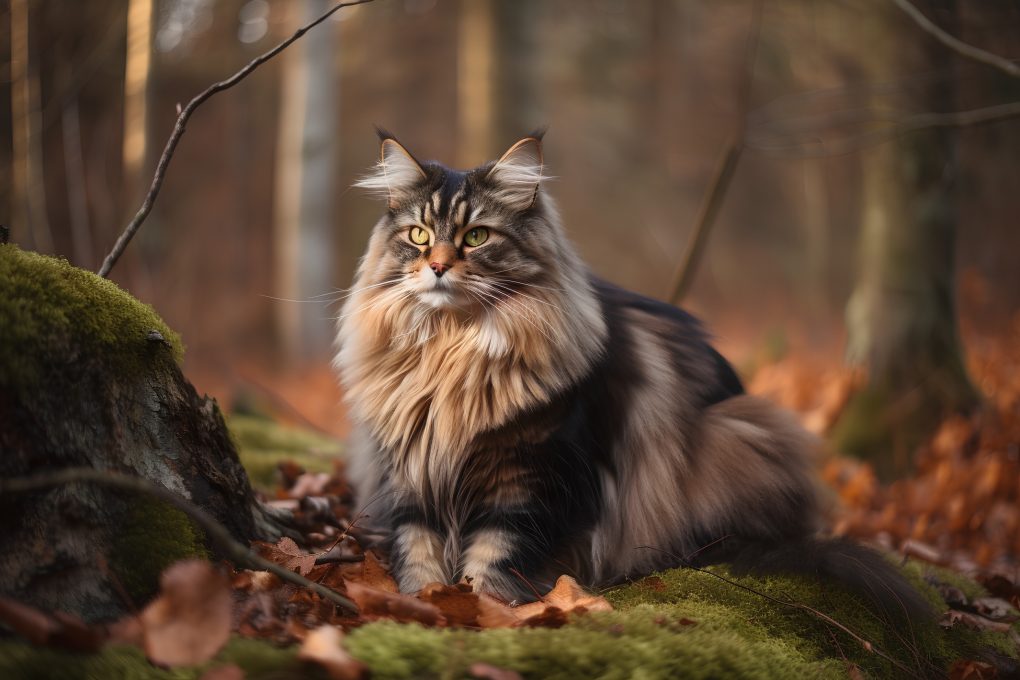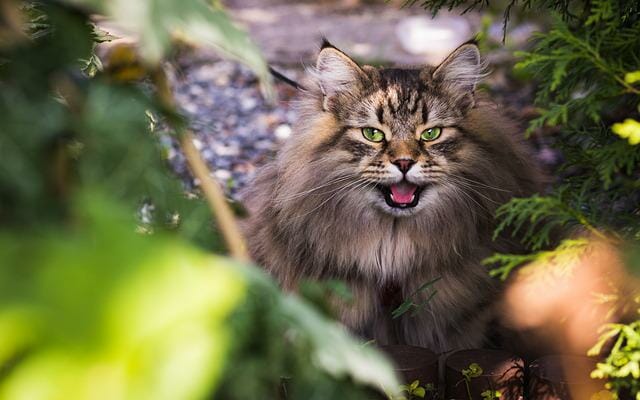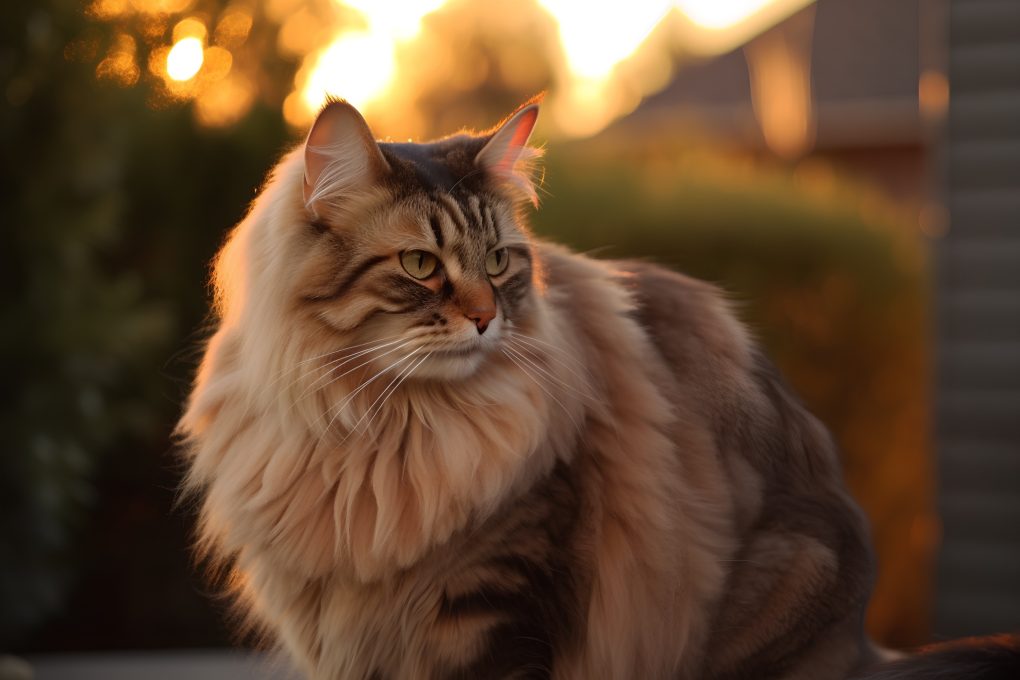Most Beautiful Siberian Cat: Siberian Cat Types and Tips to Keep Your Cat Beautiful
One of the most beautiful Siberian cats is the tortoiseshell Point Siberian cat. These cats have a unique coat pattern with orange, black, and sometimes white fur, creating a mottled tortoiseshell appearance.
The “point” in their name refers to the darker coloring on their face, ears, paws, and tail, similar to a Siamese cat’s. This color variation is less common than other Siberian colors, such as solid white, black, or tabby.


Like other Siberian cats, the Tortoiseshell Point Siberian has a muscular build, a round face, and large, expressive eyes. You can easily identify this beautiful Siberian cat. They are known for their playful and affectionate personalities and are often called “gentle giants” due to their size and gentle nature. They are also highly intelligent and adaptable, making them great companions for families or individuals who enjoy an active lifestyle.
Table of Contents
The Most Beautiful Siberian Cat Types
There is only one recognized breed of the Siberian cat, but within the breed, there can be variations in appearance and coat color; here are some common variations.
Traditional Siberian
The traditional Siberian cat is a medium to large-sized breed with a muscular build and a round, broad head. They have expressive eyes that are usually green, gold, or a combination of the two, and their ears are medium-sized and rounded at the tips.
One of the most distinctive features of the traditional Siberian cat is its coat, which is thick and triple-layered to protect them from the cold climate of its native Siberia. The topcoat is long, soft, and water-repellent, while the undercoat is dense and plush. The coat comes in various colors and patterns, including solid colors like black, white, red, tabby, tortoiseshell, and calico.
Despite their rugged appearance, traditional Siberian cats are known for their friendly and outgoing personalities. They are loyal and affectionate with their families and love to be around people, and are also intelligent and curious and enjoy playing and exploring their environment.
Tortoiseshell Point
A tortoiseshell point Siberian cat, also known as a colorpoint Siberian, is a variation of the Siberian breed with a unique and distinctive coat pattern. Like other Siberians, they have a muscular build, a broad and round head, and expressive eyes.
Their coat is also thick and triple-layered to protect them from the cold and comes in various colors and patterns. However, in a tortoiseshell point Siberian, the coat has a pointed pattern with a dark coloration on the face, ears, paws, and tail and a lighter color on the body.
The tortoiseshell point pattern can come in different variations, such as seal point, blue point, chocolate point, and lilac point, depending on the color of the coat. For example, a seal point tortoiseshell Siberian has a dark brown or black mask on the face, ears, paws, and tail and a lighter body with patches of orange, cream, and black.
Silver Siberian
A Silver Siberian is a variation of the Siberian cat breed with a unique and striking silver coat color. The coat of a Silver Siberian is thick and triple-layered like other Siberians, but with a silver or silver-tipped coat. The undercoat is usually a pale silver, while the guard hairs are black or dark grey, giving the coat a shimmering silver appearance. The silver coloring can also be seen on the face, paws, and tail.
In terms of personality, Silver Siberians are known for being friendly, affectionate, and intelligent cats. They enjoy being around people and are often described as having a dog-like personality, following their owners around, and even playing fetch. They are also curious and enjoy exploring their surroundings.
How to Keep a Siberian Cat Beautiful


Brush Regularly
Siberian cats have thick, luxurious coats. While this coat helps keep them warm in cold weather, it also requires regular grooming to keep it healthy and beautiful. Brushing your Siberian cat regularly helps to remove loose fur and prevent matting, which can be uncomfortable and painful for your cat.
Regular brushing also helps distribute your cat’s natural oils throughout its coat, which can help keep its fur shiny and healthy. In addition to promoting healthy fur, brushing your Siberian cat regularly can also help prevent hairballs, which can be a common problem for cats that groom themselves excessively.
Bathe Occasionally
While Siberian cats are generally good at grooming themselves, occasional baths can help keep their fur beautiful and healthy. Bathing your Siberian cat helps remove dirt and oil buildup in their fur, which can be difficult to remove with brushing alone. This can help prevent matting and keep your cat’s coat clean and shiny.
In addition, bathing can also help prevent skin irritation and infection, which can occur if your cat’s skin becomes dirty or oily. In addition, regular bathing can help remove bacteria and parasites that can cause skin problems, such as flea infestations.
However, it’s important to note that not all cats enjoy being bathed, and some may become stressed or anxious during the process. So, for example, if your cat doesn’t tolerate baths well, consider other grooming methods, such as dry shampoo or wipes.
Provide a Healthy Diet
What do Siberian cats eat? A healthy and balanced diet is essential for maintaining the overall health and appearance of your Siberian cat’s coat. In addition, a healthy diet provides the nutrients and vitamins required for healthy skin and fur.
Siberian cats require a diet high in protein, which is essential for the growth and maintenance of their fur. A diet rich in omega-3 and omega-6 fatty acids can also help improve the quality of your cat’s coat by promoting healthy skin and reducing inflammation.
In addition to protein and fatty acids, a healthy diet for a Siberian cat should also include a variety of vitamins and minerals, such as vitamin A, vitamin E, and biotin. These nutrients help promote healthy skin and fur and can also help prevent skin conditions and coat problems.
It’s important to provide your Siberian cat with high-quality, nutritionally balanced cat food and avoid feeding them foods high in fillers, such as corn or soy. Add supplements, such as fish oil or biotin, to their diet to help promote healthy skin and fur.
Keep Your Cat Hydrated
Adequate hydration helps keep your cat’s skin and fur healthy and moisturized, which can help prevent dryness and brittleness. When a cat is dehydrated, their skin and fur may become dry and dull-looking. Dehydration can also make it more difficult for your cat to shed old fur, leading to matting and tangles in their coat.
Providing your Siberian cat with fresh, clean water is important for maintaining its hydration. Some cats prefer to drink moving water, so consider using a water fountain to encourage your cat to drink more. You can also consider adding wet food to their diet, which can provide additional hydration.
Provide a Scratching Post
Siberian cats have an instinct to scratch, which helps keep their claws healthy and their muscles toned. Scratching also helps remove the outer layer of old fur, which can help prevent matting and tangles in their coat.
If your Siberian cat doesn’t have an appropriate scratching post, it may resort to scratching furniture or other household items, which can cause damage to your home and its claws. Scratching on inappropriate surfaces can also lead to broken or split claws, which can be painful and uncomfortable for your cat.
Providing a scratching post gives your Siberian cat an appropriate outlet for its scratching behavior. This can help keep their claws healthy and strong and can also help prevent damage to your home and your cat’s claws.
In addition to providing a scratching post, you can encourage your Siberian cat to use it by placing it in a prominent location and rewarding them with treats or praise when they use it.
Maintain a Clean Living Environment


Cats are clean animals and groom themselves regularly, but they also shed fur and can leave hairballs around your home. If your home is not kept clean, your cat’s fur can become dirty and matted, and it may also develop skin irritations or infections.
To maintain a clean living environment for your Siberian cat, it’s important to vacuum and dusts your home regularly to remove fur and dander. You should also regularly wash your cat’s bedding and any other soft surfaces they use, such as blankets or pillows, to prevent bacteria and dirt buildup.
In addition, you should also keep your cat’s litter box clean and free of odor, as this can affect their overall health and cleanliness. A dirty litter box can lead to skin irritations, infections, and other health problems. By maintaining a clean living environment, you can ensure that your Siberian cat stays beautiful. This can also help prevent health problems and create a comfortable and healthy living space for you and your cat.
